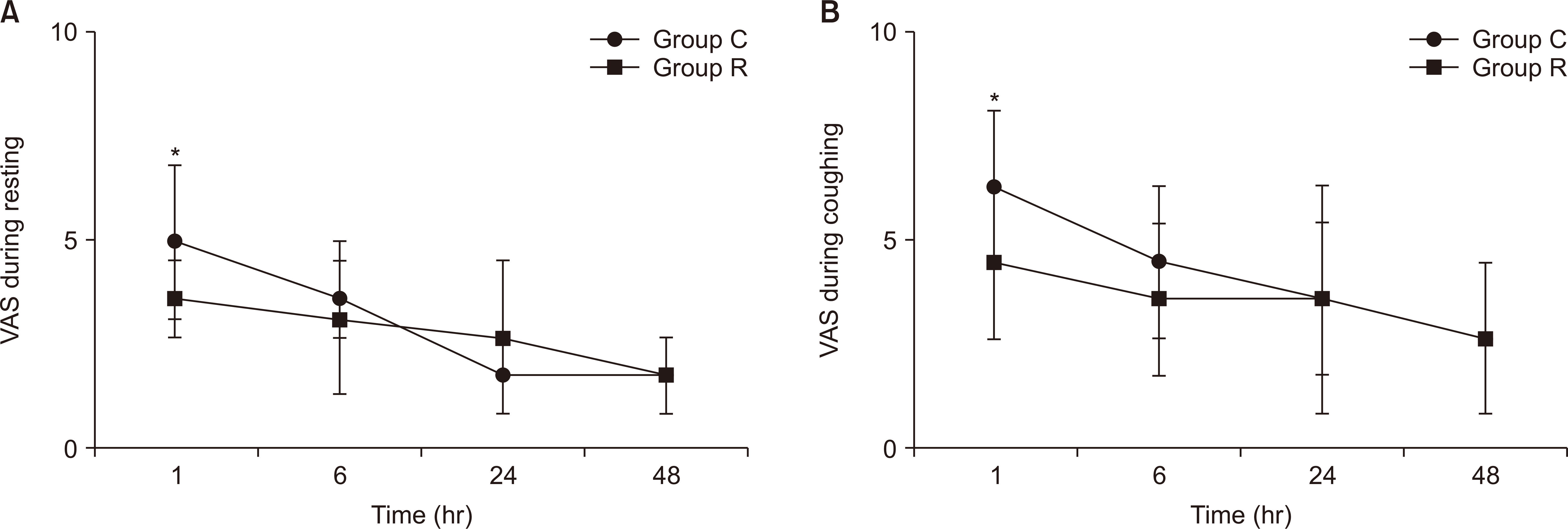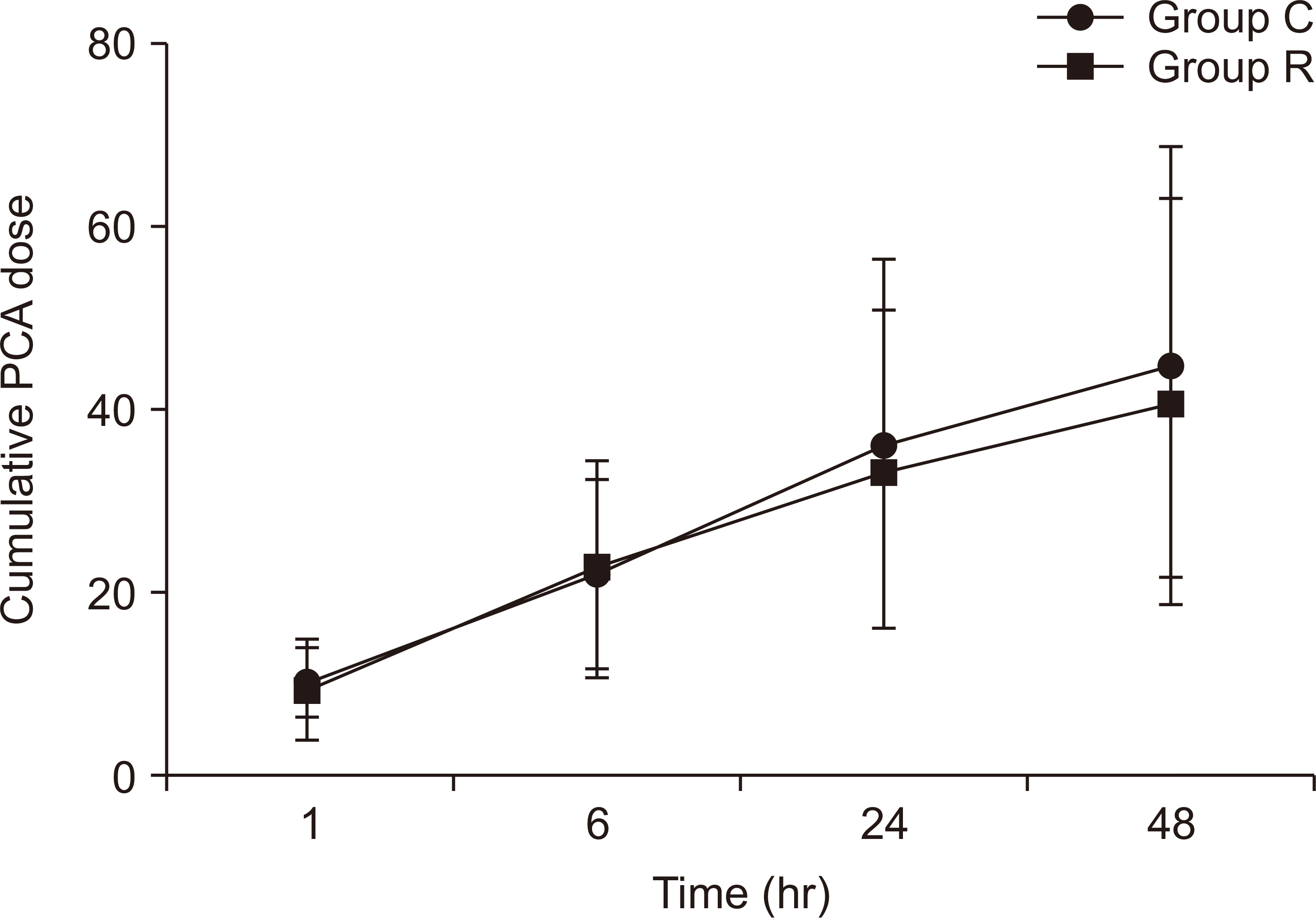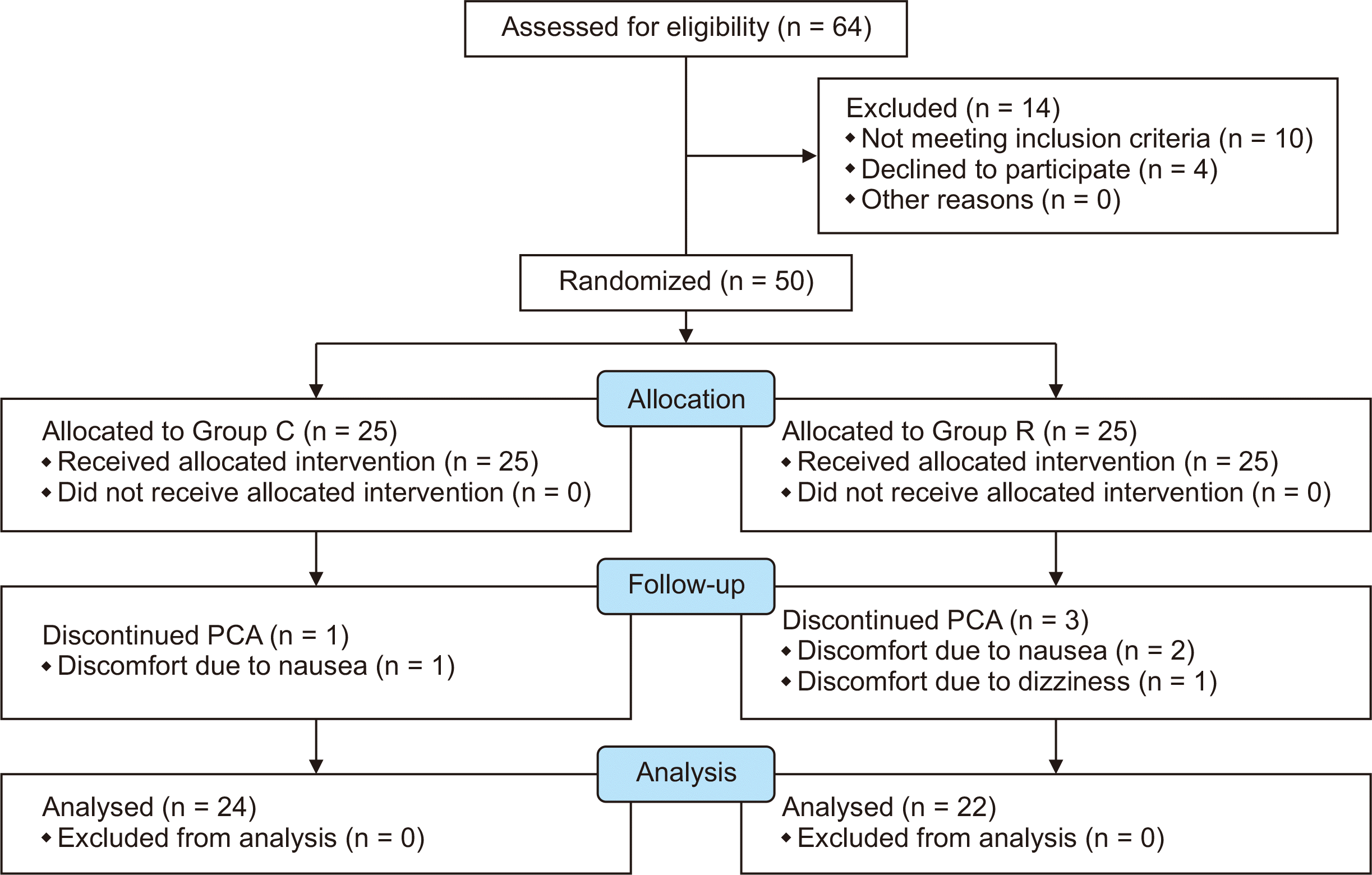1. Harris E, Barry M, Kell MR. 2013; Meta-analysis to determine if surgical resection of the primary tumour in the setting of stage IV breast cancer impacts on survival. Ann Surg Oncol. 20:2828–34. DOI:
10.1245/s10434-013-2998-2. PMID:
23653043.

2. Alves Nogueira Fabro E, Bergmann A, do Amaral E Silva B, Padula Ribeiro AC, de Souza Abrahão K, da Costa Leite Ferreira MG, et al. 2012; Post-mastectomy pain syndrome: incidence and risks. Breast. 21:321–5. DOI:
10.1016/j.breast.2012.01.019. PMID:
22377590. PMCID:
PMC7253604.

3. Chiu C, Aleshi P, Esserman LJ, Inglis-Arkell C, Yap E, Whitlock EL, et al. 2018; Improved analgesia and reduced post-operative nausea and vomiting after implementation of an enhanced recovery after surgery (ERAS) pathway for total mastectomy. BMC Anesthesiol. 18:41. DOI:
10.1186/s12871-018-0505-9. PMID:
29661153. PMCID:
PMC5902852.

4. Hickey OT, Burke SM, Hafeez P, Mudrakouski AL, Hayes ID, Shorten GD. 2010; Severity of acute pain after breast surgery is associated with the likelihood of subsequently developing persistent pain. Clin J Pain. 26:556–60. DOI:
10.1097/AJP.0b013e3181dee988. PMID:
20639740.

5. Terkawi AS, Tsang S, Sessler DI, Terkawi RS, Nunemaker MS, Durieux ME, et al. 2015; Improving analgesic efficacy and safety of thoracic paravertebral block for breast surgery: a mixed-effects meta-analysis. Pain Physician. 18:E757–80. PMID:
26431130.
7. Pace MM, Sharma B, Anderson-Dam J, Fleischmann K, Warren L, Stefanovich P. 2016; Ultrasound-guided thoracic paravertebral blockade: a retrospective study of the incidence of complications. Anesth Analg. 122:1186–91. DOI:
10.1213/ANE.0000000000001117. PMID:
26756911.
8. Albi-Feldzer A, Duceau B, Nguessom W, Jayr C. 2016; A severe complication after ultrasound-guided thoracic paravertebral block for breast cancer surgery: total spinal anaesthesia: a case report. Eur J Anaesthesiol. 33:949–51. DOI:
10.1097/EJA.0000000000000536. PMID:
27801748.
9. Kus A, Gurkan Y, Gul Akgul A, Solak M, Toker K. 2013; Pleural puncture and intrathoracic catheter placement during ultrasound guided paravertebral block. J Cardiothorac Vasc Anesth. 27:e11–2. DOI:
10.1053/j.jvca.2012.10.018. PMID:
23313290.

10. Pfeiffer G, Oppitz N, Schöne S, Richter-Heine I, Höhne M, Koltermann C. 2006; Analgesia of the axilla using a paravertebral catheter in the lamina technique. Anaesthesist. 55:423–7. DOI:
10.1007/s00101-005-0969-0. PMID:
16404582.
11. Voscopoulos C, Palaniappan D, Zeballos J, Ko H, Janfaza D, Vlassakov K. 2013; The ultrasound-guided retrolaminar block. Can J Anaesth. 60:888–95. DOI:
10.1007/s12630-013-9983-x. PMID:
23797663. PMCID:
PMC5808708.

12. Zeballos JL, Voscopoulos C, Kapottos M, Janfaza D, Vlassakov K. 2013; Ultrasound-guided retrolaminar paravertebral block. Anaesthesia. 68:649–51. DOI:
10.1111/anae.12296. PMID:
23662765. PMCID:
PMC7532298.

14. Onishi E, Murakami M, Nishino R, Ohba R, Yamauchi M. 2018; Analgesic effect of double-level retrolaminar paravertebral block for breast cancer surgery in the early postoperative period: a placebo-controlled, randomized clinical trial. Tohoku J Exp Med. 245:179–85. DOI:
10.1620/tjem.245.179. PMID:
30012909.

15. Valery P, Aliaksei M. 2013; A comparison of the onset time of complete blockade of the sciatic nerve in the application of ropivacaine and its equal volumes mixture with lidocaine: a double-blind randomized study. Korean J Anesthesiol. 65:42–7. DOI:
10.4097/kjae.2013.65.1.42. PMID:
23904938. PMCID:
PMC3726846.

16. Rohan B, Singh PY, Gurjeet K. 2014; Addition of clonidine or lignocaine to ropivacaine for supraclavicular brachial plexus block: a comparative study. Singapore Med J. 55:229–32. DOI:
10.11622/smedj.2014057.
17. Das S, Bhattacharya P, Mandal MC, Mukhopadhyay S, Basu SR, Mandol BK. 2012; Multiple-injection thoracic paravertebral block as an alternative to general anaesthesia for elective breast surgeries: a randomised controlled trial. Indian J Anaesth. 56:27–33. DOI:
10.4103/0019-5049.93340. PMID:
22529416.

18. Agarwal RR, Wallace AM, Madison SJ, Morgan AC, Mascha EJ, Ilfeld BM. 2015; Single-injection thoracic paravertebral block and postoperative analgesia after mastectomy: a retrospective cohort study. J Clin Anesth. 27:371–4. DOI:
10.1016/j.jclinane.2015.04.003. PMID:
25957529. PMCID:
PMC4467997.

19. Kairaluoma PM, Bachmann MS, Korpinen AK, Rosenberg PH, Pere PJ. 2004; Single-injection paravertebral block before general anesthesia enhances analgesia after breast cancer surgery with and without associated lymph node biopsy. Anesth Analg. 99:1837–43. DOI:
10.1213/01.ANE.0000136775.15566.87. PMID:
15562083.

20. Kaya FN, Turker G, Mogol EB, Bayraktar S. 2012; Thoracic paravertebral block for video-assisted thoracoscopic surgery: single injection versus multiple injections. J Cardiothorac Vasc Anesth. 26:90–4. DOI:
10.1053/j.jvca.2011.09.008. PMID:
22055006.

21. Naja ZM, El-Rajab M, Al-Tannir MA, Ziade FM, Tayara K, Younes F, et al. 2006; Thoracic paravertebral block: influence of the number of injections. Reg Anesth Pain Med. 31:196–201. DOI:
10.1097/00115550-200605000-00003. PMID:
16701182. PMCID:
PMC6368114.

22. Onishi E, Toda N, Kameyama Y, Yamauchi M. 2019; Comparison of clinical efficacy and anatomical investigation between retrolaminar block and erector spinae plane block. Biomed Res Int. 2019:2578396. DOI:
10.1155/2019/2578396. PMID:
31032339. PMCID:
PMC6458933.

23. Costache I, Sinclair J, Farrash FA, Nguyen TB, McCartney CJ, Ramnanan CJ, et al. 2016; Does paravertebral block require access to the paravertebral space? Anaesthesia. 71:858–9. DOI:
10.1111/anae.13527. PMID:
27291614.

24. Adhikary SD, Bernard S, Lopez H, Chin KJ. 2018; Erector spinae plane block versus retrolaminar block: a magnetic resonance imaging and anatomical study. Reg Anesth Pain Med. 43:756–62. DOI:
10.1097/AAP.0000000000000798. PMID:
29794943.
25. Sabouri AS, Crawford L, Bick SK, Nozari A, Anderson TA. 2018; Is a retrolaminar approach to the thoracic paravertebral space possible? a human cadaveric study. Reg Anesth Pain Med. 43:864–8. DOI:
10.1097/AAP.0000000000000828. PMID:
29923954.

26. Damjanovska M, Stopar Pintaric T, Cvetko E, Vlassakov K. 2018; The ultrasound-guided retrolaminar block: volume-dependent injectate distribution. J Pain Res. 11:293–9. DOI:
10.2147/JPR.S153660. PMID:
29445296. PMCID:
PMC5808708.

27. Yang HM, Choi YJ, Kwon HJ, O J, Cho TH, Kim SH. 2018; Comparison of injectate spread and nerve involvement between retrolaminar and erector spinae plane blocks in the thoracic region: a cadaveric study. Anaesthesia. 73:1244–50. DOI:
10.1111/anae.14408. PMID:
30113699.

29. Hong B, Bang S, Chung W, Yoo S, Chung J, Kim S. 2019; Multimodal analgesia with multiple intermittent doses of erector spinae plane block through a catheter after total mastectomy: a retrospective observational study. Korean J Pain. 32:206–14. DOI:
10.3344/kjp.2019.32.3.206. PMID:
31257829. PMCID:
PMC6615445.

30. Schwenk ES, Mariano ER. 2018; Designing the ideal perioperative pain management plan starts with multimodal analgesia. Korean J Anesthesiol. 71:345–52. DOI:
10.4097/kja.d.18.00217. PMID:
30139215. PMCID:
PMC6193589.








 PDF
PDF Citation
Citation Print
Print




 XML Download
XML Download